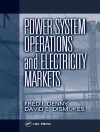With the consequences of the world’s gas flaring practices only just beginning to be understood or even studied, this volume is the first in decades to tackle a very difficult hot-button issue for our time that could significantly reduce CO2 emissions and their affect on global warming.
When properly used and maintained, flare gas systems can be a safe and reliable technology for system protection and in controlling emissions stemming from emergency releases. However, when misused and/or not carefully maintained, flaring operations can be a significant source of toxic emissions that adversely impact on air quality. Further to this, there are often misconceptions and misrepresentations on flaring efficiencies. This has led to under reporting of releases of toxins within communities.
Flares are widely used throughout the oil refining and petrochemical industries to manage waste gases and as a means of safety control of over pressurization of process units. Both industry and environmental statutes concerning the regulation of flares characterize flaring as a safe practice that is capable of controlling air emissions to a high level of efficiency. But flaring operations are conducted far more frequently than systems were originally intended to operate, and aging refineries and petrochemical plants have given low priority to the critical maintenance and replacement of flare system components. The consequences have been far greater emissions than are generally reported along with serious accidents that have caused loss of lives and extensive damages to facility infrastructure and community property.
This volume is intended as a technical reference for refineries and chemical plants. The information contained herein is the result of reviewing the general literature of flaring options and technologies, reviewing industry and U.S. EPA-published studies, and examining some of the practices of certain refinery operations where information has been accessible.
Tabella dei contenuti
Preface vii
About the author xi
1 Principles of Combustion 1
1.1 Introduction 1
1.2 Combustion Basics 3
1.3 Physical Gas Laws 9
1.4 Stoichiometric and Thermodynamic Considerations 11
1.5 Ignition 12
1.6 Flammability and Flammable Mixtures 14
1.7 Gas Mixtures 20
2 Overview of Flares and Gas Flaring Practices 23
2.1 General Description 23
2.2 Types of Flares 25
2.3 Flare System Components and Design Features 32
2.4 Flare Regulations 38
2.5 Flare Enforcement Actions 48
2.6 Major Suppliers 52
2.7 Flare Terminology 52
3 Overview of Disposal Systems and Relief Headers 59
3.1 Blowdown Systems 59
3.2 Disposal System Components 63
3.3 Quench Drum 70
3.4 Seals and the Seal Drum 71
3.5 Knockout Drums 73
4 Flare Types 75
4.1 Introduction 75
4.2 Hydrogen Assisted Flares 77
4.3 Steam Assisted Flares 92
4.4 Efficiency and Smoking Flares 97
5 Remote Sensing and Monitoring 103
5.1 Introduction 103
5.2 Remote Sensing Dial Technology 103
5.3 Experience 106
6 Practical Considerations and Emissions Calculations
113
6.1 Introduction 113
6.2 Sizing Considerations 114
6.3 General Permit Obligations 118
6.4 Monitoring System Requirements 122
6.5 Marama Guidelines for Calculating Flare Emissions 130
6.6 TCEQ New Source Review (NSR) Emission Calculations 136
6.7 U.S. EPA’s AP-42 145
6.8 Calculations Versus Measurement 152
7 Case Studies 157
7.1 Introduction 157
7.2 The Exxon Chalmette Refinery 158
7.3 The BP Texas City Refinery 170
7.4 Valero Tennessee Refinery 232
Appendix 241
Properties Data 241
Circa l’autore
Nicholas P. Cheremisinoff, Ph D, is a consultant to
industry, international lending institutions, and donor agencies on
pollution prevention and responsible environmental care practices.
With a career spanning more than thirty years, he is also the
author, coauthor, or editor of more than 150 technical books and
hundreds of state-of-the-art review and scientific articles. He
received his BSc, MSc, and Ph D degrees in chemical engineering from
Clarkson College of Technology.












